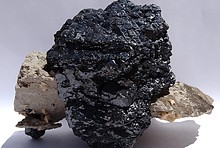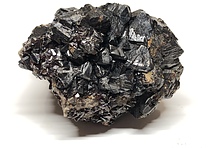Home PageAbout MindatThe Mindat ManualHistory of MindatCopyright StatusWho We AreContact UsAdvertise on Mindat
Donate to MindatCorporate SponsorshipSponsor a PageSponsored PagesMindat AdvertisersAdvertise on Mindat
Learning CenterWhat is a mineral?The most common minerals on earthInformation for EducatorsMindat ArticlesThe ElementsThe Rock H. Currier Digital LibraryGeologic Time
Minerals by PropertiesMinerals by ChemistryAdvanced Locality SearchRandom MineralRandom LocalitySearch by minIDLocalities Near MeSearch ArticlesSearch GlossaryMore Search Options
The Mindat ManualAdd a New PhotoRate PhotosLocality Edit ReportCoordinate Completion ReportAdd Glossary Item
Mining CompaniesStatisticsUsersMineral MuseumsClubs & OrganizationsMineral Shows & EventsThe Mindat DirectoryDevice SettingsThe Mineral Quiz
Photo SearchPhoto GalleriesSearch by ColorNew Photos TodayNew Photos YesterdayMembers' Photo GalleriesPast Photo of the Day GalleryPhotography
╳Discussions
💬 Home🔎 Search📅 LatestGroups
EducationOpen discussion area.Fakes & FraudsOpen discussion area.Field CollectingOpen discussion area.FossilsOpen discussion area.Gems and GemologyOpen discussion area.GeneralOpen discussion area.How to ContributeOpen discussion area.Identity HelpOpen discussion area.Improving Mindat.orgOpen discussion area.LocalitiesOpen discussion area.Lost and Stolen SpecimensOpen discussion area.MarketplaceOpen discussion area.MeteoritesOpen discussion area.Mindat ProductsOpen discussion area.Mineral ExchangesOpen discussion area.Mineral PhotographyOpen discussion area.Mineral ShowsOpen discussion area.Mineralogical ClassificationOpen discussion area.Mineralogy CourseOpen discussion area.MineralsOpen discussion area.Minerals and MuseumsOpen discussion area.PhotosOpen discussion area.Techniques for CollectorsOpen discussion area.The Rock H. Currier Digital LibraryOpen discussion area.UV MineralsOpen discussion area.Recent Images in Discussions
Mineral PhotographyMFT camera for minerals?

10th Aug 2015 18:28 UTCFlorian Baur
So far I was using a Pentax K10 I borrowed and liked the results. On a german board (mineralienatlas) a user suggested to get the Olympus E-M5 or better yet 1 and the M Zuiko 60 mm 2.8 lense.
At first I was vary as it's an MFT camera and I thought the main advantage of those was their lesser weight and size. Both of which doesn't matter too much when photographing static objects at home. I then read, however, that MFT actually has an advantage over larger sensors when it comes to macro as the depth of field is larger.
So it seems the E-M1 with the 60mm/2.8 lense is good equipment. But since it's not too cheap I'd like to hear some more opinions.
Sooner or later I also want to go into microphotography - will the E-M1 be a good choice in that regard as well? I'd rather spend a little more on the camera body now if I get a model that will be with me for quite some years to come.
PS: Yesterday I tried photographing a beautiful neon green fluorescent Uranophane with red tufts of probably Billietite. The results were really bad :-( ... the green was dim and instead there were purple flares at many parts of the specimen. It seems like fluorescense photography is yet another difficult field.

11th Aug 2015 06:11 UTCStephan Wolfsried Expert
The whole setup see here:
http://www.mindat.org/article.php/2089/My+setup+chronology
Stephan

11th Aug 2015 18:11 UTCFlorian Baur
1) Since both the E-M1 and the NEX 7 are MFT cameras, the objectives should be relatively easy to exchange? The Olympus 60mm/2.8 seems to be quite good, would it work with the Sony? If not...
2) I want to start with scales not beyond 1:1, so just a simple macro lense should be okay for the start. Which one are you using if at all? If it's in the setup chronology, sorry, I couldn't find it.
Beyond 1:1 it probably doesn't matter what the body's make is as those are microscope lenses anyway?




Mindat.org is an outreach project of the Hudson Institute of Mineralogy, a 501(c)(3) not-for-profit organization.
Copyright © mindat.org and the Hudson Institute of Mineralogy 1993-2024, except where stated. Most political location boundaries are © OpenStreetMap contributors. Mindat.org relies on the contributions of thousands of members and supporters. Founded in 2000 by Jolyon Ralph.
Privacy Policy - Terms & Conditions - Contact Us / DMCA issues - Report a bug/vulnerability Current server date and time: May 12, 2024 22:28:34
Copyright © mindat.org and the Hudson Institute of Mineralogy 1993-2024, except where stated. Most political location boundaries are © OpenStreetMap contributors. Mindat.org relies on the contributions of thousands of members and supporters. Founded in 2000 by Jolyon Ralph.
Privacy Policy - Terms & Conditions - Contact Us / DMCA issues - Report a bug/vulnerability Current server date and time: May 12, 2024 22:28:34











